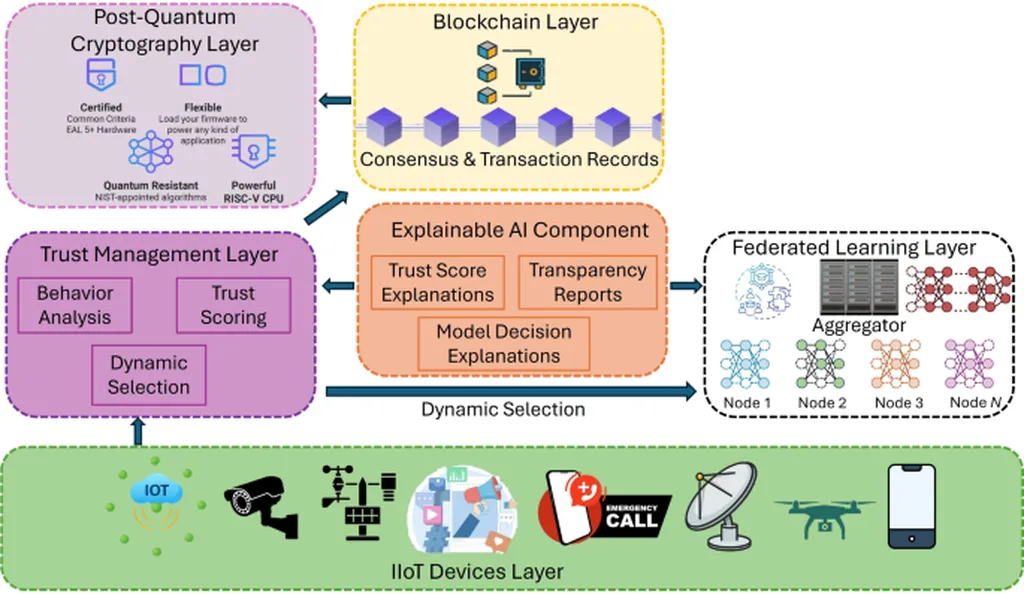In the rapidly evolving landscape of artificial intelligence and machine learning, multi-agent reinforcement learning (MARL) has emerged as a critical area of research, particularly for its applications in defence and security. A recent study by researchers Shuhan Qi, Shuhao Zhang, Xiaohan Hou, Jiajia Zhang, Xuan Wang, and Jing Xiao introduces an innovative distributed framework designed to overcome the challenges of MARL in incomplete information environments. This breakthrough could significantly enhance the capabilities of autonomous systems in military and strategic applications.
Multi-agent reinforcement learning involves multiple agents learning to make decisions in complex environments where information is often incomplete. Traditional MARL approaches have faced several hurdles, including slow sample collection, poor sample exploration, unstable model iteration, and low training efficiency. These challenges are exacerbated by the fact that most existing distributed frameworks are tailored for single-agent reinforcement learning and are not well-suited for the complexities of multi-agent scenarios.
The researchers addressed these issues by designing a distributed MARL framework based on the actor-worker-learner architecture. This architecture allows for the simultaneous deployment of multiple asynchronous environment interaction modules, significantly boosting the speed and diversity of sample collection. By decoupling the model iteration from environment interaction, the framework optimizes the use of computing resources and accelerates policy iteration, leading to more stable and efficient training processes.
One of the standout features of this framework is its ability to improve sample diversity and collection speed. In environments where information is incomplete, diverse and rapid sample collection is crucial for training robust and adaptive models. The asynchronous interaction modules ensure that the agents can explore a wide range of scenarios, enhancing the overall learning process.
The effectiveness of the proposed framework was validated in two distinct environments: the MaCA military simulation environment and the SMAC 3D real-time strategy gaming environment. Both environments are characterized by incomplete information, making them ideal testbeds for evaluating the performance of MARL algorithms. The results demonstrated that the framework not only accelerates the training process but also improves the stability and efficiency of model iteration, making it a valuable tool for defence and security applications.
The implications of this research are far-reaching. In the defence sector, autonomous systems equipped with advanced MARL capabilities can operate more effectively in dynamic and unpredictable environments. Whether it’s autonomous drones, unmanned ground vehicles, or cyber defence systems, the ability to make rapid and informed decisions in incomplete information scenarios is paramount. The framework developed by Qi and colleagues provides a robust solution to these challenges, paving the way for more advanced and reliable autonomous systems.
Moreover, the framework’s ability to leverage distributed computing resources makes it scalable and adaptable to various applications. As the demand for autonomous systems continues to grow, the need for efficient and effective training frameworks will become even more critical. The research by Qi and colleagues represents a significant step forward in addressing these needs, offering a blueprint for future developments in the field of multi-agent reinforcement learning.
In conclusion, the distributed MARL framework proposed by Shuhan Qi and the research team offers a promising solution to the challenges of training autonomous systems in incomplete information environments. By enhancing sample collection speed, diversity, and model iteration stability, this framework has the potential to revolutionize the way autonomous systems are trained and deployed in defence and security applications. As the field of MARL continues to evolve, this research provides a valuable contribution that will shape the future of autonomous technologies. Read the original research paper here.

